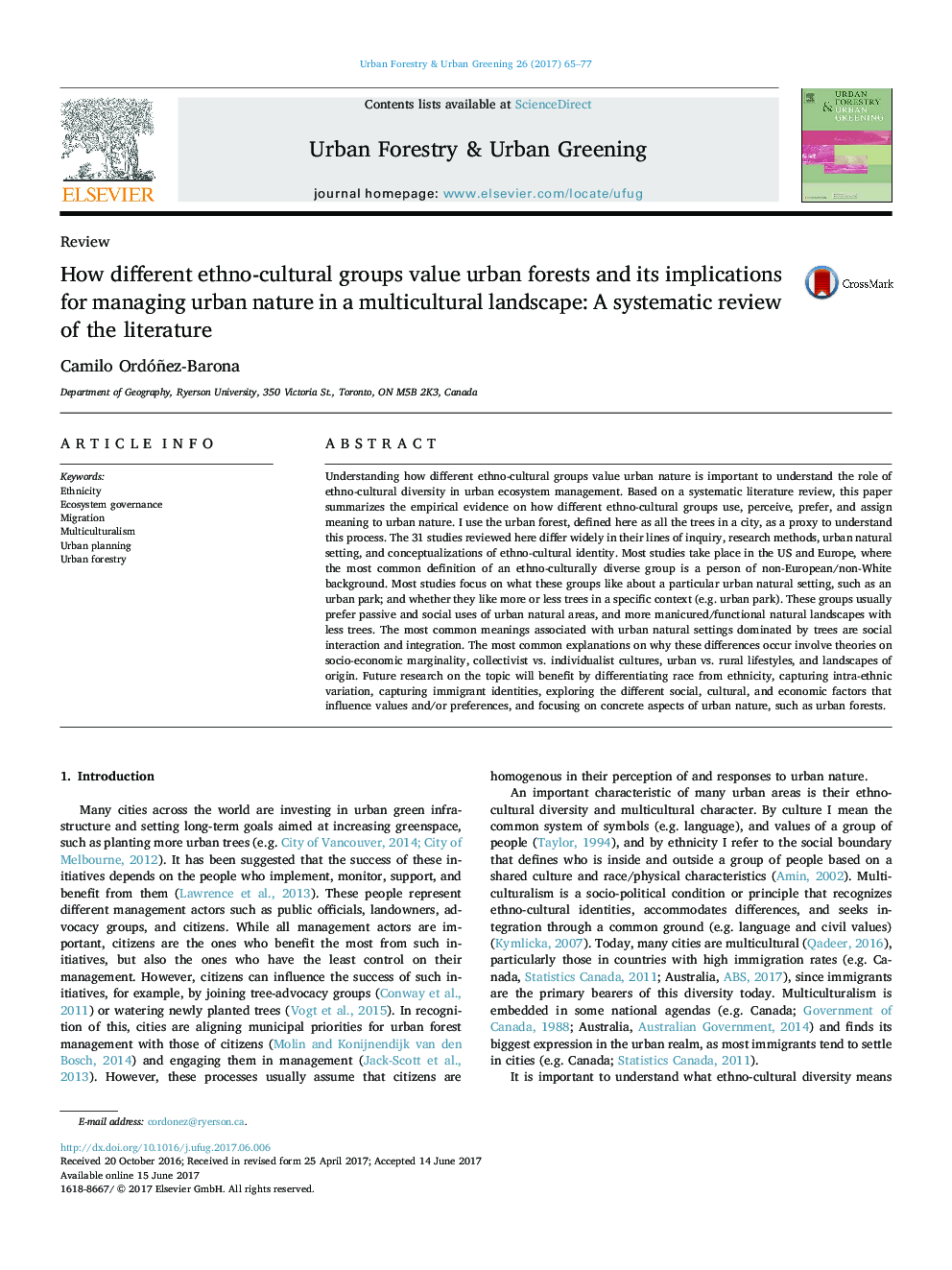| Article ID | Journal | Published Year | Pages | File Type |
|---|---|---|---|---|
| 6461827 | Urban Forestry & Urban Greening | 2017 | 13 Pages |
Understanding how different ethno-cultural groups value urban nature is important to understand the role of ethno-cultural diversity in urban ecosystem management. Based on a systematic literature review, this paper summarizes the empirical evidence on how different ethno-cultural groups use, perceive, prefer, and assign meaning to urban nature. I use the urban forest, defined here as all the trees in a city, as a proxy to understand this process. The 31 studies reviewed here differ widely in their lines of inquiry, research methods, urban natural setting, and conceptualizations of ethno-cultural identity. Most studies take place in the US and Europe, where the most common definition of an ethno-culturally diverse group is a person of non-European/non-White background. Most studies focus on what these groups like about a particular urban natural setting, such as an urban park; and whether they like more or less trees in a specific context (e.g. urban park). These groups usually prefer passive and social uses of urban natural areas, and more manicured/functional natural landscapes with less trees. The most common meanings associated with urban natural settings dominated by trees are social interaction and integration. The most common explanations on why these differences occur involve theories on socio-economic marginality, collectivist vs. individualist cultures, urban vs. rural lifestyles, and landscapes of origin. Future research on the topic will benefit by differentiating race from ethnicity, capturing intra-ethnic variation, capturing immigrant identities, exploring the different social, cultural, and economic factors that influence values and/or preferences, and focusing on concrete aspects of urban nature, such as urban forests.
